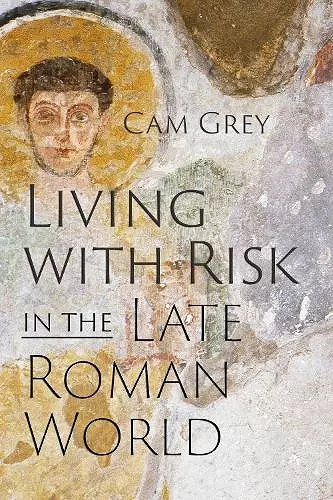Living with Risk in the Late Roman World
Format:Hardback
Publisher:University of Pennsylvania Press
Published:18th Feb '25
£65.00
Supplier delay - available to order, but may take longer than usual.

Multidisciplinary in its methodology and provocative in its argumentation, Living with Risk in the Late Roman World demonstrates that human communities in the ancient past were inextricably intertwined with the world around them, and that the actions they took simultaneously responded to and shaped the risks that they perceived.
Explores the ever-present experiences of risk that characterized the daily existence of individuals, communities, and societies in the late Roman world
Living with Risk in the Late Roman World explores the ever-present experiences of risk that characterized the daily existence of individuals, communities, and societies in the late Roman world (late third century CE through mid-sixth century CE). Recognizing the vital role of human agency, author Cam Grey bases his argument on the concept of the riskscape: the collection of risks that constitute everyday lived experience, the human perception of those risks, and the actions that exploit, mitigate, or exacerbate them. In contrast to recent grand narratives of the fate of the late Roman Empire, Living with Risk in the Late Roman World focuses on the quotidian practices of mitigation and management, foreknowledge and prediction, and mobilization and manipulation of risks at the individual and community levels.
Grey illustrates the ubiquity of these practices through a collection of anecdotes that emphasize the highly localized, heterogeneous, and complementary nature of riskscapes: members of local communities enlisting figures of power to neutralize the hazards posed by imminent catastrophes, be it a tsunami, earthquake, or volcanic eruption; Christian holy figures both suffering and imposing bodily affliction as part of their claims to control such hazards and thereby to exercise influence in these communities; intimate experiences of seasonality and weather that shaped local practices of subsistence but also of self-representation; and geographically specific and fiercely contested claims to special knowledge and control of water.
Multidisciplinary in its methodology and provocative in its argumentation, Living with Risk in the Late Roman World demonstrates that human communities in the ancient past were inextricably intertwined with the world around them, and that the actions they took simultaneously responded to and shaped the risks—both hazardous and favorable—that they perceived.
"In Living with Risk in the Late Roman World, Cam Grey offers a new vision of the precarity of ancient life. Where we were accustomed to think of catastrophes such as volcanic eruptions or droughts as interruptions of the status quo, Grey shows how ancient populations lived with a constant awareness of danger and uncertainty. Their habits of thought and their ways of life reflected this awareness. Grey’s case studies combine ancient testimony and archaeological data with insights drawn from a range of social and natural science disciplines to produce a compelling new understanding of the conditions of life around the late Roman world." * Greg Woolf, author of The Life and Death of Ancient Cities: A Natural History *
"Employing the concept of ‘riskscape’ as the analytical framework by which to interpret the late Roman world, Cam Grey marvelously evokes people’s perceptions of hazards as well as their physical vulnerability to them, and the interplay and relationship between the physical and metaphysical worlds. In doing so, Grey integrates disaster studies with late Roman world history very well, showing not only a mastery of the historiography and sources of late Roman antiquity, but also demonstrating a thorough conversance with the literature and theories current in critical disaster studies." * Gregory Bankoff, co-editor of Why Vulnerability Still Matters: The Politics of Disaster Risk Creation *
ISBN: 9781512827392
Dimensions: unknown
Weight: unknown
376 pages